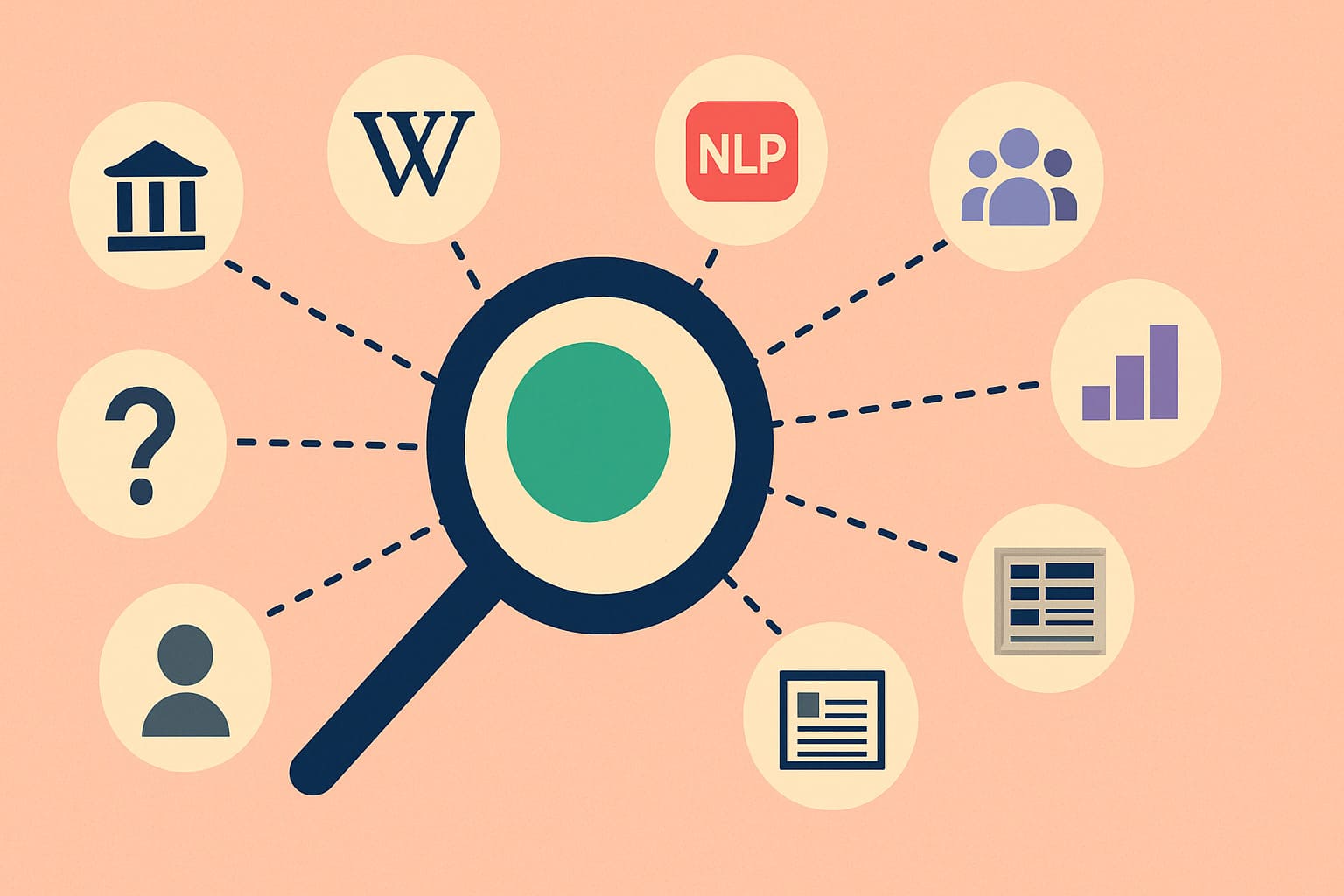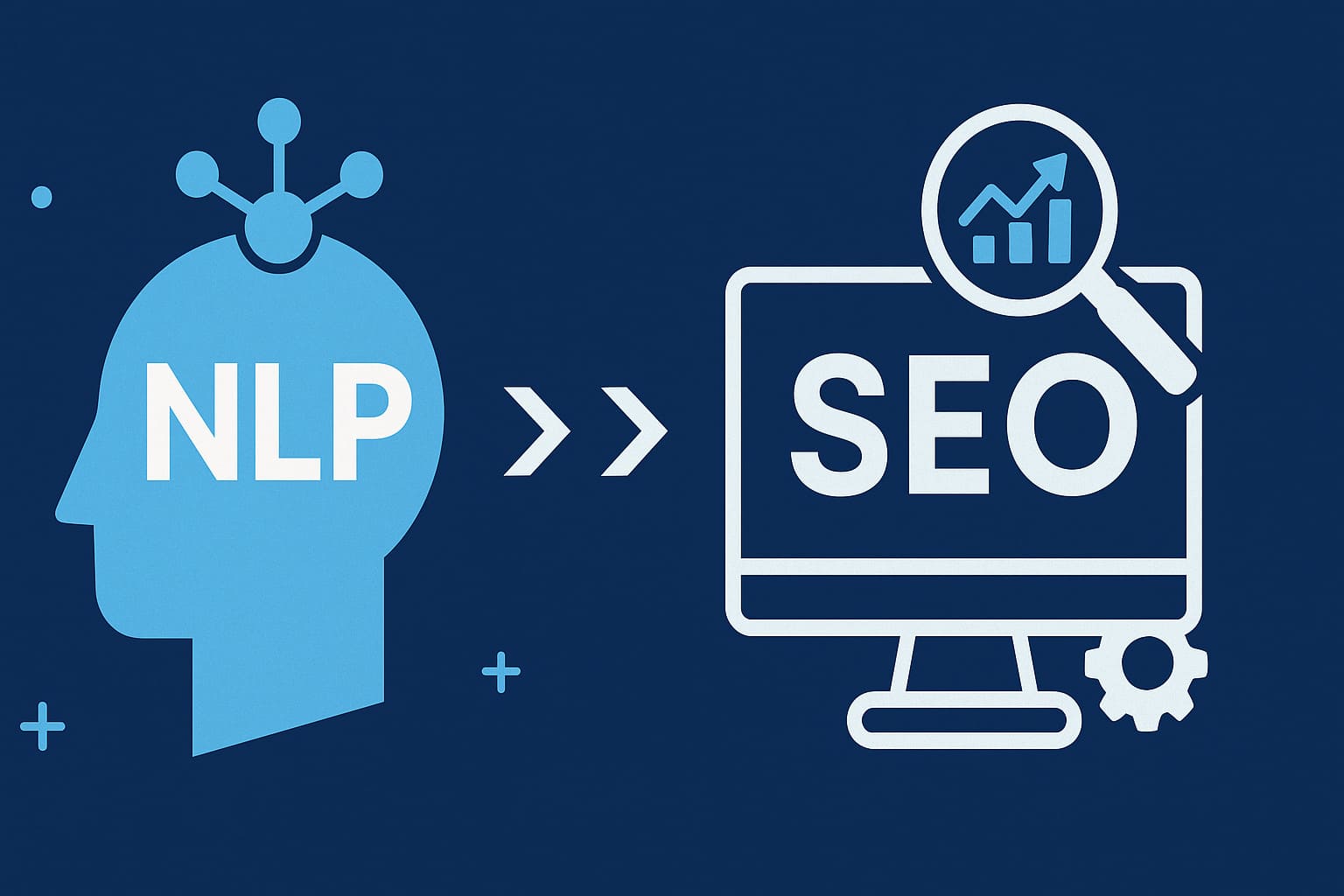You wrote the post. You picked smart keywords. Yet your content is not ranking.
The reason? Google now ranks pages by meaning, not just by words. It connects topics, not just terms. If your page lacks related entities, it lacks semantic context. That means Google sees it as thin, even if it is long.
Related entities are real-world concepts tied to your topic. Think “domain authority”, “content clusters”, “search query intent”, or “semantic keywords”. Google uses these NLP signals to decide what your page is about and who should see it.
This blog explains how to find related entities in SEO, from query parsing to entity linking and BERT-based similarity. No jargon. No fluff. Just real ways to uncover what Google is already expecting to see.
What Are Related Entities in SEO?
In SEO, a related entity is a concept, place, brand, person, or term that connects naturally to your main topic. Google identifies these through its knowledge graph and NLP models like BERT. It builds a web of meaning around what you write.
You search “digital marketing”. Google does not just look for pages with that phrase. It looks for pages that mention “content strategy”, “social media platforms”, “target audience”, or “brand awareness”. These are not synonyms. They are related entities.
You do not need to overthink it. If you are writing about “backlinks”, related entities could be “anchor text”, “link equity”, “nofollow tag”, or “page authority”. These terms help Google decide your content is complete and trustworthy.
So no, a related entity is not just a fancy keyword. It is a known thing that adds semantic value. It tells Google you know what you are talking about. And that gets rewarded.
Where Does Google Learn This From?
Google relies on entity catalogs—databases of facts that help build understanding.
| Catalog | Focus / Data Structure | Use Cases |
|---|---|---|
| Wikipedia | Articles, images, textual content | Knowledge panels, entity reference |
| Wikidata | Structured data items | Powering Wikipedia, facts for infoboxes |
| DBpedia | Semantic web data from Wikipedia | Research, semantic web projects |
| Freebase | Merged into Google’s Knowledge Graph | Early backbone of entity-based search |
These catalogs teach Google how to connect entities, attributes, and relationships—exactly how humans do.
13 Tips on Finding Related Entities for SEO
Not all methods work for every business, but these proven tactics will uncover related entities that boost semantic relevance, improve topic alignment, and unlock better search visibility. Use these to strengthen your content the way Google understands it.
1. Browse Wikipedia Pages
Search your service or niche on Wikipedia. Look at linked articles, the infobox, and the See Also section. These links reflect interlinked entities and Google treats them as context-rich relationships.
2. Check Google’s People Also Ask
Search your primary term. Click the People Also Ask questions. Each one hints at a semantic expansion. Google creates these questions by analyzing entity co-occurrence patterns.
3. Use Competitor Knowledge Panels
Search competitors by brand name. If Google shows a Knowledge Panel, study the labels, descriptions, and linked entities. This gives you ideas for what Google connects to them—which likely connects to you.
4. Read Industry News
News articles often repeat terms Google classifies as important entities. Look for organization names, events, and terms that occur across trusted publications. These are high-value entity signals.
5. Use Related Searches at Bottom of Google
Scroll to the bottom of any Google result page. The related searches are derived from query expansion models and reflect other entities users associate with your topic.
6. Try Wikidata Query Service
Visit the Wikidata SPARQL endpoint. Search for your brand, service, or industry. It shows structured attributes, entity types, and connections that mirror how Google builds its entity graph.
7. Scrutinize DBpedia
Search your industry or brand inside DBpedia. It extracts semantic triples like (Item → Attribute → Value). You get a deeper layer of entity linking, synonyms, and alternate labels.
8. Google NLP API Demo
Paste your blog or page into Google’s NLP demo. It returns salient entities, entity categories, and salience scores that reveal what Google thinks your content is really about.
9. Explore AlsoAsked.com
Type in your main topic. This tool builds question trees showing how users expand a subject. Each node reveals a potential supporting entity or intent-based subtopic.
10. Use AnswerThePublic
Enter a keyword and get grouped queries by prepositions, comparisons, and question types. These often relate directly to underlying entity relationships or adjacent topics.
11. Run Named Entity Recognition with spaCy
Install spaCy and run NER on your content. It detects organization names, tools, dates, and metrics. These are automatically tagged based on trained entity recognition models.
12. BERT-Based Suggestion Models
Use Sentence-BERT or similar models to generate context-aware terms around a seed phrase. This helps discover semantically close entities that keyword tools miss.
13. Review TextRazor Entity Output
TextRazor analyzes any content and extracts topics, entity types, relevance scores, and linked identifiers. It’s ideal for mapping entity overlap between your content and top-ranking pages.
How to Use Related Entities in Your Content
Finding related entities is step one. Now the real work begins—using them the right way.
Place your entities where they matter most. Use them in headings, in the first paragraph, in alt text, and in the spots Google scans first. When you say “SEO strategy”, back it up with “keyword intent”, “crawlability”, or “content freshness”. These semantic cues help Google connect the dots.
Do not drop them in randomly. Instead, write the way you would explain it to a friend. If you are talking about image optimization, mentioning “file size”, “lazy loading”, and “alt attributes” feels natural. That is exactly what works.
Use your entities to create content clusters. Link pages that share topic relevance using anchor text that reflects these entities. For example, your page on “local SEO” can link to pages on “Google Business Profile”, “NAP consistency”, or “review signals”. This forms a semantic network that Google trusts.
Also, map your entities to FAQ blocks and structured data. If you mention “featured snippets” or “search rankings”, label them with proper schema properties. That helps Google index your content faster and show it more often.
Use them where you want Google to understand what the topic is about—that means everywhere with meaning.
Why Finding Related Entities Matters for Ranking
You used the right keyword. So did your competitors. So why does their page rank higher? The answer is simple. They gave Google more meaning, not more keywords.
Google does not scan your content like a robot. It uses a knowledge graph—a massive web of connected entities. These help it understand how your page fits into a bigger picture. Think of it like this: Google connects ideas the same way humans do.
Adding related entities like “link signals”, “ranking factors”, or “crawl budget” tells Google that your content goes beyond basics. It proves you are not just repeating words—you understand the topic.
More entities mean better semantic coverage. That leads to stronger topical authority, improved search intent alignment, and more visibility in places like People Also Ask, featured snippets, and semantic SERP highlights.
Does Google rank pages with more related entities better?
Yes—if those entities help explain the topic clearly. It is not about quantity. It is about contextual relevance.






